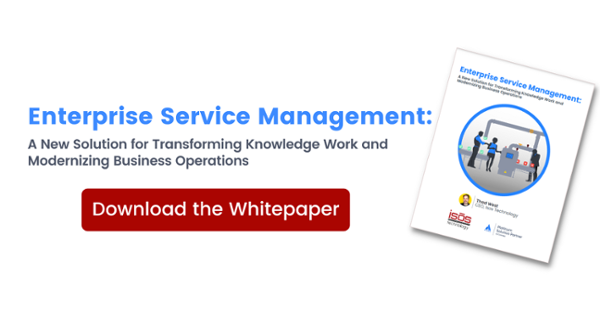 At Isos Technology, we are 100% dedicated to the implementation, customization, and support of Atlassian tools, so it should come as no surprise that we would recommend Jira Service Management (JSM) for your next ITSM solution. Following are just some of the ways Jira Service Management can modernize the IT service desk, making it a more agile and resilient tool that supports the entire organization in times of growth and/or disruption.
At Isos Technology, we are 100% dedicated to the implementation, customization, and support of Atlassian tools, so it should come as no surprise that we would recommend Jira Service Management (JSM) for your next ITSM solution. Following are just some of the ways Jira Service Management can modernize the IT service desk, making it a more agile and resilient tool that supports the entire organization in times of growth and/or disruption.
1. It’s a Key Atlassian Tool
JSM is part of the Atlassian platform, which consists of more than a dozen tools that support software development, IT service management, and collaboration. This includes Jira Software, which is used for project management and issue and bug tracking, and may already be in use by your engineering, development, and/or operations teams. JSM sits on top of Jira and layers a customer service portal over it, so support and development teams can easily work together in the same environment. JSM tickets can even be linked to issues in Jira. This end-to-end visibility minimizes friction, supports faster resolution, and makes it easier to pull feedback into the DevOps loop.
2. It’s Scalable and Extensible
JSM is in use by both small and very large organizations, and is designed to scale as companies grow. It’s stable, reliable, has high availability, and includes disaster recovery safeguards, data backup, redundancy, and other measures to minimize business impact should a disruptive, unplanned event occur. JSM is incredibly robust out of the box, but the Atlassian Marketplace also offers hundreds of applications and integrations to add features and extend its functionality.
3. It’s Flexible and Customizable
JSM is highly customizable on both the front end—the customer portal that users see and interact with—and the back end. You can, for example, customize request types, add new fields, and edit existing ones. The out-of-the-box setup includes workflows based on ITIL best practices, but they can be adapted to your processes, including how and when issues are escalated, who is notified, and when they’re notified. This flexibility is part of what makes the solution work so well not only for the IT service desk, but for other parts of the organization as well.
4. You Can Measure Customer Satisfaction
JSM includes customer satisfaction (CSAT) surveys for managing customer expectations and measuring customer satisfaction. As issues are resolved and tickets are closed, metrics can be evaluated to determine overall service desk performance against your goals. JSM also includes built-in, one-question surveys to measure CSAT with custom reports to view trends over time. For organizations looking for more, the Atlassian Marketplace features tons of apps for more in-depth surveying.
5. It’s Easy to Get Up-and-Running
There is never a good time to replace your ITSM technology. For companies that have invested heavily in integrating their current IT service desk with other ITSM and DevOps software, or have spent time and energy developing home-grown applications to make it fully serviceable, the prospect can be especially daunting. Relative to other service desk technology, JSM is fast and straightforward to implement, especially for organizations that are already using other Atlassian tools.
Bottom line: Implementing Jira Service Management is an investment in your company’s future that you’ll be able to build on for many years to come. If you want to discuss how JSM can work for your organization, reach out to Isos Technology and our ITSM solution experts can help you get started.
Sign up to receive more great content
Learn more about Atlassian and how Isos can help by signing up to receive our latest blogs, eBooks, whitepapers and more.














